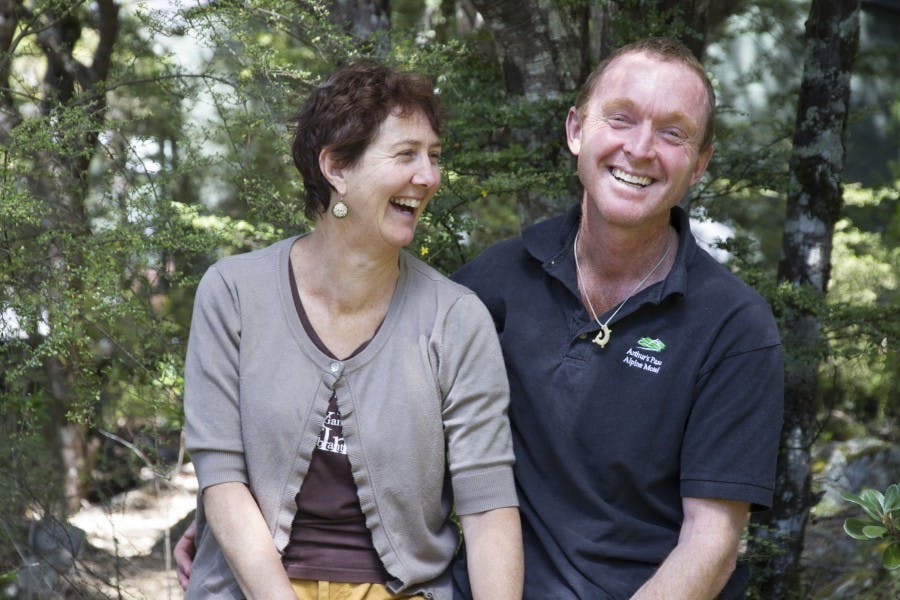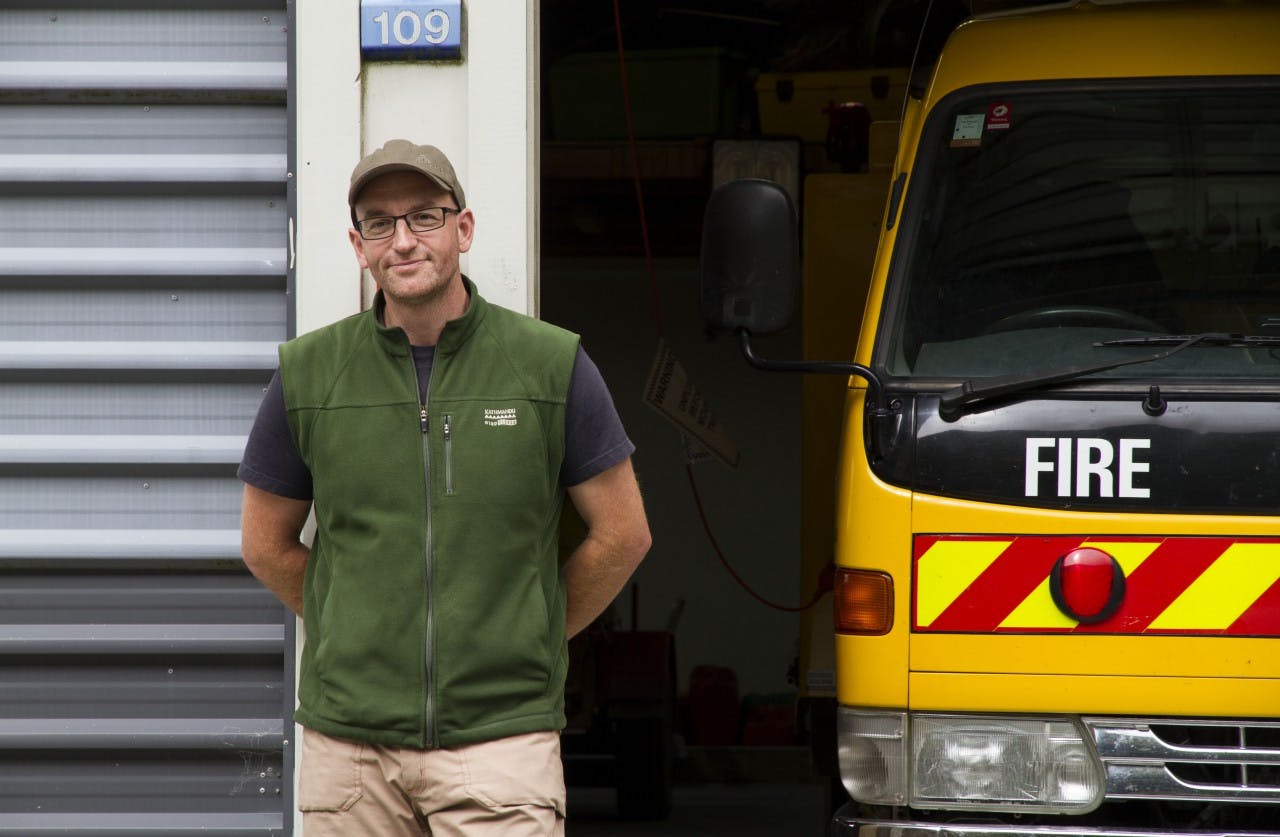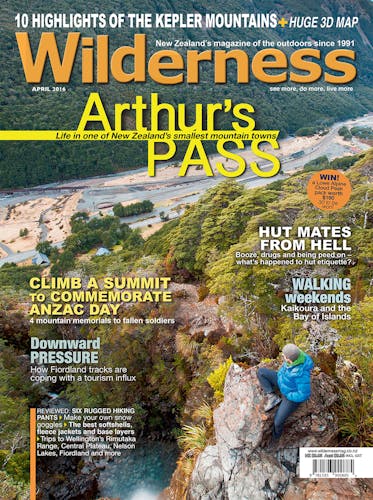Arthur’s Pass is home to just 30 people, but together they maintain an active volunteer fire brigade, search and rescue unit and a wildlife trust that looks after hundreds of stoat traps to protect kiwi, whio and other native birds. What’s it like living in a small community in the middle of the mountains? Anna Pearson asked some locals
To some, it’s a pit stop on the way to Christchurch or the West Coast, after navigating the Otira Gorge or Porter’s Pass. It’s a toilet break, a takeaway coffee. To others, it’s a weekend retreat, where one trades the hum of the city for a quaint, rustic family bach. It’s a fire, red wine and Scrabble. To an increasing number of Te Araroa walkers, it’s a place to send food parcels, their hefty contents to be shouldered and lugged north or south. To about 30-odd people, or 30 odd people (a local joke), the alpine village of Arthur’s Pass is home.
Despite being within just two hours’ drive of Christchurch, Arthur’s Pass is a place of extremes. In winter, pipes freeze, cars get stuck and roads close due to heavy snowfall. In summer, the Arthur’s Pass Cafe and Store pumps with motorists and tourists alike and the local fire crew is kept busy with everything from serious crashes to drownings and out-of-control campfires. Year-round, Arthur’s Pass National Park, at 1144km2, is home to vast amounts of easily-accessible, rugged terrain, which leads to frequent search and rescue call outs.
At 740m elevation and surrounded by beech forest, the village at Arthur’s Pass is both peaceful and noisy; a soundtrack combining birdsong with engine brakes from trucks passing and the shunting of trains. The airspace above is a no fly zone, meaning commercial aircraft are banned, unless in an emergency, distinguishing Arthur’s Pass from destinations such as Aoraki/Mt Cook and Franz Josef. In town, it’s common to see tourists photographing kea with smartphones. It’s also common to see kea stealing food from tourists, with ever-increasing audacity.
State Highway 73 carves a deep valley between the Southern Alps, crossing the Main Divide and bridging the eastern side of the South Island and the West Coast. Proof of the village’s midway status lies in the weather. If it’s raining at John Wilson’s pad near the start of the popular Devils Punchbowl Waterfall track, at the top end of town, it could be sunny at John and Judy Charles’ place, just a few kilometres down the road.

Fiona and Pete Neale moved to the village after buying the Arthur’s Pass Alpine Motel / PHOTO: Anna Pearson
When Pete and Fi Neale moved to Arthur’s Pass from Christchurch more than two years ago after buying the Arthur’s Pass Alpine Motel, they were surprised to learn that Arthur’s Pass National Park, too, was divided. Gazetted in 1929, the park was initially administered by the Department of Lands and Survey, which combined with the Forest Service and the Wildlife Service to form the Department of Conservation (DOC) in 1987. Back then, important decisions about the park’s management were made by staff in Arthur’s Pass. These days, Arthur’s Pass National Park is essentially split in two, with responsibility shared between DOC’s Rangiora and Hokitika offices. Locals say the Arthur’s Pass office has fewer resources than it did in previous years, and less autonomy.
Chris Stewart, a senior ranger in the Arthur’s Pass office, and his wife Deb live in a two-storey, khaki house at the south end of the village. They moved from Christchurch seven years ago but already had a long association with the place. Chris did summer work in the park for the Department of Lands and Survey as a student in the 1970s and Deb’s family had a holiday home near Arthurs Chalet when she was growing up. Deb’s uncle was also one of the first rangers in town. Chris and Deb frequented Temple Basin Ski Area, and met on a guided walk in the national park.
The Stewarts enjoy the lifestyle in Arthur’s Pass, away from from the tarmac and bustle of a city, and are grateful for the relative isolation. Chris says the locals respect each other’s privacy. “You couldn’t afford to live in each other’s pockets all the time because it’s such a small community.” But they pull together when it matters. “If a big earthquake happened here we’d be the ones that would have to look after each other.” It’s a place where people have multiple jobs, many of which are voluntary.
Chris is the secretary of Arthur’s Pass Rescue, which responds to about 12 to 15 search and rescue call-outs a year, and is a member of the local Arthur’s Pass volunteer rural fire force. He’s also the town’s civil defence co-ordinator and represents DOC on the Arthur’s Pass Wildlife Trust, which maintain an extensive stoat trap network in the Deception, Mingha, Edwards, Upper Otira, Upper Waimakariri, Crow and Bealey valleys, and at Bealey Spur (about 450 traps in total). There are 30 kiwi in the Bealey Valley, producing one to two chicks a year.
The wildlife trust recently took on responsibility for additional traps set up by the Arthur’s Pass Bird Sanctuary, an organisation founded by former Coast to Coast director Robin Judkins. The arrangement came with funding so some of the trap lines are now paid. The Kea Conservation Trust also does work in the region.
Hamish Reid left Arthur’s Pass for the Marlborough Sounds for a job with Outward Bound just before Christmas last year, moving with his wife Eleanor and two children. He reckons the village is home to a “higher than average amount of introverts”. A trained outdoor instructor, Hamish originally moved to the village for a job with the Arthur’s Pass Outdoor Education Centre. He planned to stay two years, but that was before he met Eleanor, who was “well and truly attached to the place”. Hamish worked as a community relations ranger at DOC for a couple of years after his first job and as a self-employed outdoor instructor for the rest of the time. He was also a St John Ambulance first responder, a key member of Arthur’s Pass Rescue (he was chairman for about four years), a volunteer with the wildlife trust and a member of the fire brigade.
Hamish says the permanent residents of Arthur’s Pass “have made a very deliberate decision to be there and because of that it’s a place that sort of feels like it has a purpose”. Like mountaineers tied together on a rope, they share experiences and risks. “Because of the size of the village and the intensity of some of the things we ended up doing, you develop bonds with other people that are quite different,” he says. “You know them in a way that most people never get to know their neighbours.”
He and Eleanor, who used to run the visitor centre, are reluctant to be described “ex-Arthur’s Pass”, after living there for 15 years. “We have kept our house in Arthur’s Pass and we’re still on the email lists for various things.”
Nic Menary, who has lived in the village for 12 years and works at Mountain House backpackers, says the sense of community comes from doing things together, rather than socialising at the pub. And it’s easy to get involved. When Pete Neale first arrived in town, he signalled his interest in joining the fire brigade; something he says he would never have done in Christchurch. “They said, ‘When the siren goes off, come down to the station’. A lot of my early training up here was on a call-out.”
Nic is the fire controller for the Arthur’s Pass brigade as well as a rescue volunteer and a St John Ambulance first responder. He says the nine volunteers who make up the fire brigade are often first on the scene, and remain so for some time, until backup arrives from Springfield, Kumara or further afield. “The biggest thing we do is car accidents and that is just by virtue of the fact that there is nobody else to do it. You’re such a long way from anywhere.”
Last year, the Selwyn District Council provided the brigade with a new emergency response vehicle, which is able to carry out functions usually well beyond the expectations of a volunteer fire force. In August, Nic, Hamish and Scott Carmody, the local policeman, used the grunty, double-cab Landcruiser to rescue about 20 motorists stuck in snowdrifts in the Otira Gorge, after word of the mass stranding filtered through via the Wobbly Kea Cafe.
The brigade also owns a regular fire appliance, which carries equipment for externally fighting structure fires. The volunteers are not trained to go inside burning buildings but they still managed to save Geoff Keey and Renée Habluetzel’s 1930s railway cottage in a blaze in early 2014, dousing it with water from the outside. “We wouldn’t have had a standing house if it wasn’t for the fire volunteers,” Renée says. A member of the brigade had to ring them to tell them the news, as they were away, staying with friends in Marlborough. “They told us they’d turned it into a lake.”

Nick Meanary is, among other roles, the fire controller for the Arthur’s Pass Volunteer Fire Force / PHOTO: Anna Pearson
Renée and Geoff married at the Arthur’s Pass Chapel in 2008, moved down from Wellington in 2010 and started Arthur’s Pass Village B&B Homestay soon after. Geoff works as an advisor for non-government organisations such as the Antarctic Ocean Alliance and Forest and Bird, something he is mostly able to do remotely. Renée, who has a background in hospitality, says living right on the doorstep of a national park is “just such a privilege”.
The fire that tore through Geoff and Renée’s house in 2014 started in the ceiling cavity. While they were devastated to see the damage on their return, they say the response of the community was “incredible”. They welcomed paying guests again in January, almost two years later, but left scorch marks on their polished rimu floors as “a reminder of what our wee cottage endured”, says Renée. They’re using bits of untreated wood that they couldn’t salvage from their charred house in their log burner. “It’s a bit weird feeling warm burning what’s left of our old roof but it gets a good blaze going.”
Together, Judy and John Charles, in their 70s, have clocked up more than 100 years living in the middle of the mountains. They met in Arthur’s Pass, got married in the chapel and live in a house that John built on the same section as a small cottage they bought years ago. John says his building skills came from his time with the Department of Lands and Survey (he was the head ranger at one stage), constructing shelters and huts. The beams in the ceiling are from an old railway bridge and the front door is from the old stationmaster’s house. The original cottage at the front of the property is rented out as Snowgrass Cabin.
John says Arthur’s Pass was “ruled by the railway” until the late 1970s. The train was electric from Otira to Arthur’s Pass and steam from there on. “They had a stationmaster and about three traffic assistants that looked after the yard both day and night.” He says the store sold boots and billies and the population was about 60. It all changed in 1978, however. “That’s when they moved a lot of staff out.”
John and Judy raised two children in the village and have had various jobs. John left the Department of Lands and Survey in 1988, a year after it became DOC, and did several summer trips to Antarctica, helping to restore historic huts. He also worked as a walking guide and helped a mate from Jacksons with building jobs. “I think we re-roofed just about every house in Arthur’s Pass.” Judy has read electricity metres, worked at Arthurs Chalet, for the Country Library Service and, like many other locals, done time at the store. A trustee and former chairwoman of the wildlife trust, she has been monitoring the same trap line, close to home, since 2004. She says it’s rewarding hearing the kiwi in her backyard calling at night.
There’s no more land available to build on in Arthur’s Pass and no school but with Arthurs Chalet closed and seeking a buyer, there’s room for new people to give alpine living a shot.
Fiona Neale says she and Pete found the transition from Christchurch to Arthur’s Pass “incredibly easy”. It helped that they knew a lot of locals already. Pete’s family has had a bach in Arthur’s Pass for more than 50 years and they met there in 1981. It did not take long for them to become entrenched in the community.
Pete, a former aluminium joiner, is a member of the fire brigade, chairman of the wildlife trust, chairman of the Arthur’s Pass Community Centre Association and is on the committee of the Arthur’s Pass Association. He’s also the unofficial “town crier”, sharing social events and community news via an email database of permanent residents.
Kester Barkley would have to be the newest resident, at just a couple of months old. Kester is believed to be the first baby born in the village for at least 50 years. His parents Magdala and Jamin moved to Arthur’s Pass from North Canterbury in 2013 when Jamin secured a fixed-term contract with DOC, working with orange-fronted parakeet over summer. Asher, the couple’s first son, was born in Hokitika four months later. Kester was born in the living room of a DOC house in December last year.
On top of his summer work with DOC, Jamin, who used to work as a fitter and turner, has relied on various other jobs, including cleaning the DOC office, the public toilets, and had a contract with Fulton Hogan, helping with road closures. Last winter, he did week-about in Christchurch, working as a hammer hand. Magdala has done casual administration work for the store and is the secretary of the wildlife trust.
Magdala says she didn’t know what to expect before arriving in Arthur’s Pass, fearing it might be cliquey or too transient to feel settled. “Then we came up here and discovered that the community was amazing.” If you want to stay long term, however, you have to “make it work”. Kester and Asher are the only children in the village, aside from a six-month-old belonging to another family. They’ll probably be home-schooled, like Magdala and Jamin were.
John says Arthur’s Pass either grips you and becomes part of your life, or you can’t stand it and can’t wait to leave. “It’s a love/hate sort of place. I mean, some people find it pretty claustrophobic because you are hemmed in by the hills.” But he and Judy are not going anywhere anytime soon. “I always say to people, ‘where else can you live where you have a 240,000 acre backyard that starts just outside your back fence?’ You feel like it’s your own little kingdom.”








